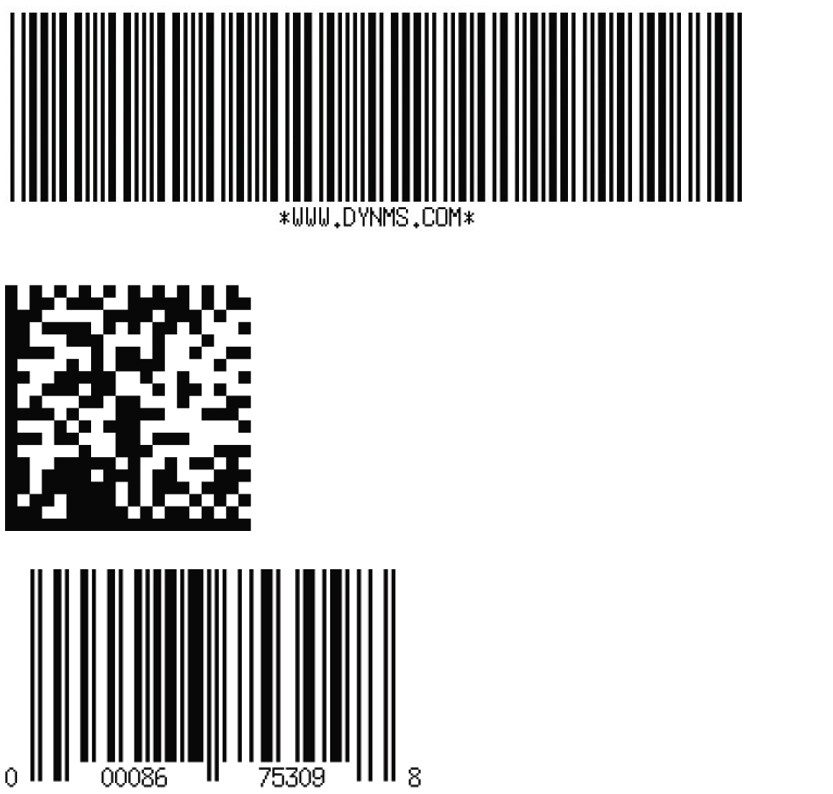The benefits of automated data collection – keeping the physical and virtual worlds in sync in your business
Source: Äri-IT, autumn 2022
Author: Erki Rebane, BCS Itera Project Manager
Replacing the physical recording of transactions with automated solutions will not only reduce the number of errors, but also the direct costs of data collection.

DATA MANAGEMENT
Nowadays, it is difficult to imagine an organisation being able to function properly without a data management system. Data management has become an integral part of business and can be performed either by using a simple spreadsheet program or a sophisticated ERP (enterprise resource planning) system.
Data streams originate from a variety of sources, such as warehouse management, purchase orders, shipping documents, invoices, payroll data, supply chain contacts, etc. If the data collected by a company are accurate and up-to-date, it can be a competitive advantage, but mismanagement of data can have negative consequences.
Poor data management can lead to:
- excess stocks
- rapidly made purchases that are not properly thought through
- lower than expected margin or loss of sales
- productivity losses
- increased office costs
- poorer customer service
PHYSICAL RECORDING OF TRANSACTIONS
One of the reasons for reduced quality of data is the physical recording of transactions. Even in organisations with electronic data management systems, many transactions are still recorded on paper. There are many examples: handwritten receipts, issuing spare parts for maintenance work, finished product reports, manually filled in time sheets, stock records, etc. Eventually, all these physically described transactions have to be converted into electronic formats, which requires extra time from the staff and increases the likelihood of errors. These errors, in turn, can lead to significant costs.
Examples of causes for typical errors:
- lost transactions (‘I lost this document’)
- delayed transactions (‘I only found it today’)
- incorrectly entered information (‘I don’t understand his handwriting’)
Poorly managed data can lead to a chain reaction of impacts. For example, if a warehouse worker picks up the wrong item, the stock balance for that item will show a stock level that is higher than the actual status. Once a problem is identified, workers must spend time taking inventory to correct the stock balance. This takes them away from their usual work process, lowering productivity, increasing overheads, and decreasing profit margins. If the problem is not identified in due time, offers are based on incorrect customer data, resulting in changes to the agreed delivery dates and poor customer service. The general rule of thumb is that a 10% increase in the volume of deliveries that cannot be met by the agreed delivery date will result in a 1% loss of market share. Recording transactions on paper is a problem, and one mistake at the beginning of the process can affect the whole supply chain.
Here are some well-known solutions that help to digitise and automate all the paperwork.
MOBILE TECHNOLOGIES
BARCODES are the most common technology, based on cost-efficiency and ease of use. This popularity has been boosted by the ever-increasing amount of data that can be stored on a single barcode.
Vertical barcodes in Figure 1 are examples of common one-dimensional barcodes used in industry and warehousing. The data matrix code in the middle, however, is already part of the next generation of two-dimensional barcodes, which contain even more information.
RFID (radio-frequency identification) is one possible way to fully automate the data collection process. The RFID tag contains a sensor attached to an antenna that allows data to be transmitted to the reader. Each sensor usually contains unique identifiers and the reader can read more than 100 tags simultaneously. Moreover, line of sight is not required for this reading. This makes it easier to automate processes that would otherwise require additional time and resources, and where the likelihood of human error is high.
RFID versus BARCODE
At first glance, RFID seems like the best option – it can read multiple items at once, whereas with barcodes, each item needs to be scanned individually. But if it’s more efficient, why hasn’t it replaced barcodes? Like with all technologies, each has its advantages and limitations.
HOW TO CHOOSE BETWEEN RFID AND BARCODES
The advantages of RFID:
- efficiency: multiple units can be scanned simultaneously
- durability: can withstand exposure to sun and rain
- allows greater security than barcodes
The disadvantages of RFID:
- materials (metal and liquid) can affect the signal
- RFID readers can be ten times more expensive than barcode readers
- implementation can be complex and time-consuming
Making the right choice is a process in itself, but whatever technology you choose, you will reap significant benefits either way.
BENEFITS
Some examples of how automated systems increase efficiency.
Inventory management
To illustrate the advantages of an automated system in inventory management, let’s consider a wholesaler with several thousand SKUs (stock keeping units). In the past, a full inventory was carried out once a year and a manual or paper-based method was used to monitor stock levels and manage other processes.
The inventory was their biggest event of the year. In order to avoid service disruption, inventory was usually carried out on weekends and employees were paid for overtime. Preparations started 10 days earlier, and a weekend actually meant three full days (Friday to Sunday) of counting stock. After the inventory weekend, it took four full-time workers approximately five days to enter and check all the data.
Recognising the need to reduce the cost of inventory, management decided to implement a barcode-based system. The solution consisted of barcoded labels applied to products by the manufacturer, and mobile hand-held scanners used by workers to receive, store, and pick the products. As a result of the restructuring, inventories were now carried out more frequently and lasted at most four to five days, including preparation and follow-up activities. Real-time inventory management reduced the number of errors associated with manual entry, and thus the need for subsequent inventory adjustments. Thanks to the reduction in labour alone, the barcoding system paid off in the first year.
Recording working time
This is an area that is often overlooked where automated systems can improve processes. Let’s look at a manufacturing company with 300 employees using physical timesheets. Each of them works on four to five workstations (e.g. behind different workbenches) during the day, with two full-time employees needed to enter and manage all the timesheet data. The switch to an automated system was already justified on the grounds of saving on the labour cost required to manually enter all the timesheet data into the reporting and payroll systems.
Further exploration of the tangible and intangible benefits will show how simple and effective making the switch can be. The management decided to implement a barcode system to monitor the use of staff time. Wireless tablets were installed in the warehouse, giving staff quick access to equipment at the point of transaction. The recording of working time spent on various activities was integrated into the existing ERP and payroll system to give management a real-time overview of production processes.
The benefits of moving to an automated system were immediately visible to the payroll department. What used to require two full-time employees can now easily be achieved by less than one. Errors related to the manual entry of timesheets were largely eliminated and management was able to obtain a real-time overview of labour utilisation and the movement of materials used in production. This way, the need to reprocess defective products was greatly reduced, and it allowed management to identify exactly which production processes had the greatest impact on product quality.
FREQUENTLY ASKED QUESTIONS
Will these technologies work for me?
Naturally, there are situations where mobile barcodes or RFID solutions are not worth the cost, but these are rare. However, many factors need to be taken into account when choosing the best system for your sector. For example, in a metalworking plant, there may not be much point in keeping track of inventory, but you could benefit from better tracking of working hours. A wholesaler, on the other hand, may not need a better labour tracking solution, for example, but they do need better inventory management. A manufacturer whose orders require a lot of spare parts and labour could benefit from both. Here are a number of questions you should ask yourself when evaluating automatic monitoring systems.
In which cases is data entry required?
Data entry points can be:
- delivery
- receipt
- time recording
- completing orders
- inventory
- invoicing
- etc.
Breaking processes down into their most basic components will help you to accurately assess where automated data collection will have the greatest positive impact on your business.
What are the costs and risks of inaccurate data in these points?
It must be taken into account that some parts of the process are more important than others, or that the generation of inaccurate data in these parts leads to high costs. Knowing where to enter data will help you make the right decision about automated data collection.
How much will it cost to improve these areas by collecting data electronically?
Most turnkey solutions are priced to ensure a quick return on investment. Getting a system that meets specific business requirements can cost a lot more – experienced consultants can help you assess the return on investment and make technical decisions.
The payback period for automated systems varies, but is usually between 6 and 12 months. In addition to the hard benefits, automated data systems offer many soft benefits, such as improved brand reputation and employee satisfaction.
The introduction of barcode technology generally has an immediate positive impact on a company’s profits. Fewer compiling and data entry errors and reduced inventory are just a few examples of where a barcode system can deliver significant benefits for a relatively small investment. Ultimately, however, the benefits must outweigh the costs and there is no point in buying a system only to later realise that additional investment is needed to bring it into line with your actual needs.
Map your needs, find solutions, and act accordingly. Sacrificing quality for short-term savings will not solve efficiency problems.

